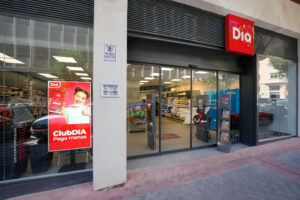Dia Group posts net sales of €3.4bn for H1 2019, down 7%
September 16, 2019
July and August overall like-for-like sales show gradual progress.
One-off impacts included in the Adjusted EBITDA, totaling EUR 88.8m, relate to stock liquidation efforts and to accounts receivable write-offs.
The Company set to promote the initial sales recovery with several initiatives.
With a strong and long-dated capital structure, available resources of €0.8bn, and the full support of its reference shareholder, the Company is fully prepared to address the turnaround challenges.
During the first half of the year DIA’s performance was impacted by an array of negative drivers and one-offs. As a result of that, the Company registered a net attributable loss of €418m. The most relevant events were:
A collective dismissal in Spain and other headcount reduction measures in Brazil to improve productivity.
The extreme out-of-stock levels in stores across the Group and throughout the period.
The closure of 663 loss making stores with permanent negative contribution.
A strong de-franchising initiative affecting initially 222 stores, which will over
time improve and strengthen the franchisee network.
An assortment optimization initiative to achieve a meaningful reduction in SKUs to simplify complexity and improve operations.
The discontinuation of non-core activities to reduce complexity and improve efficiency and focus.
The recognition of accruals, losses and write-offs in connection with certain receivables, risks and liabilities that were provisioned.
With respect to business evolution as of the second quarter –with new leadership and with the liquidity injection of June– the immediate priority has been to normalize the relationships across the supplier base, to catch-up on and eliminate the out-of- stocks, and to have the warehouses and stores fully supplied, in order to serve customers and be back to business as usual, as soon as possible. The positive effect of this normalization is already visible in July and August, with overall like-for-like sales showing a gradual evolution from the all-time low levels (-15.5%) reported in June.
Going forward, the Company intends to further support and drive its sales recovery with initiatives across different areas (i.e.: commercial, operations, logistics, etc.) whose common goal will be to drive incremental traffic and sales in stores, and improve productivity.
“The new management team is fully aware of DIA’s demanding situation; the team has the knowledge and the expertise to put the business back on track and will continue to take the much needed steps to place DIA in a position of strength for long term success. Everyday there will be improvements and changes, and it does take some time”, stated Karl-Heinz Holland, CEO of Dia Group.
The Group now has a stable cashflow and solid base of working capital, which combined with a clear capital structure, liquidity and management team, is able to strengthen its balance sheet. In this respect, the largest impacts in Adjusted EBITDA, which total 88.8m, relate to stock liquidation efforts and to accounts receivable write- offs, (see chart below). The immediate outcome of these efforts is a stronger and healthier balance sheet.
The combination of the effectiveness of the refinancing of the existing facilities, the new facilities obtained, the profit participating loans, and the future proceeds coming from the projected share capital increase, imply the consolidation of the removal of the dissolution cause due to losses.
The viable long-term capital structure for the Company and a solution to the liquidity needs provides the basis for the successful turnaround of the business. The new debt maturity profile of the Company after the refinancing and bond repayment completed in July is detailed below.
In the context of the announced discontinuation of the Company’s cash & carry business, the company has launched a collective dismissal process in the subsidiary Grupo El Árbol Supermercados y Distribución, S.A. mainly related to the expected closing of Max Descuento stores and that could affect a maximum of 210 employees.






